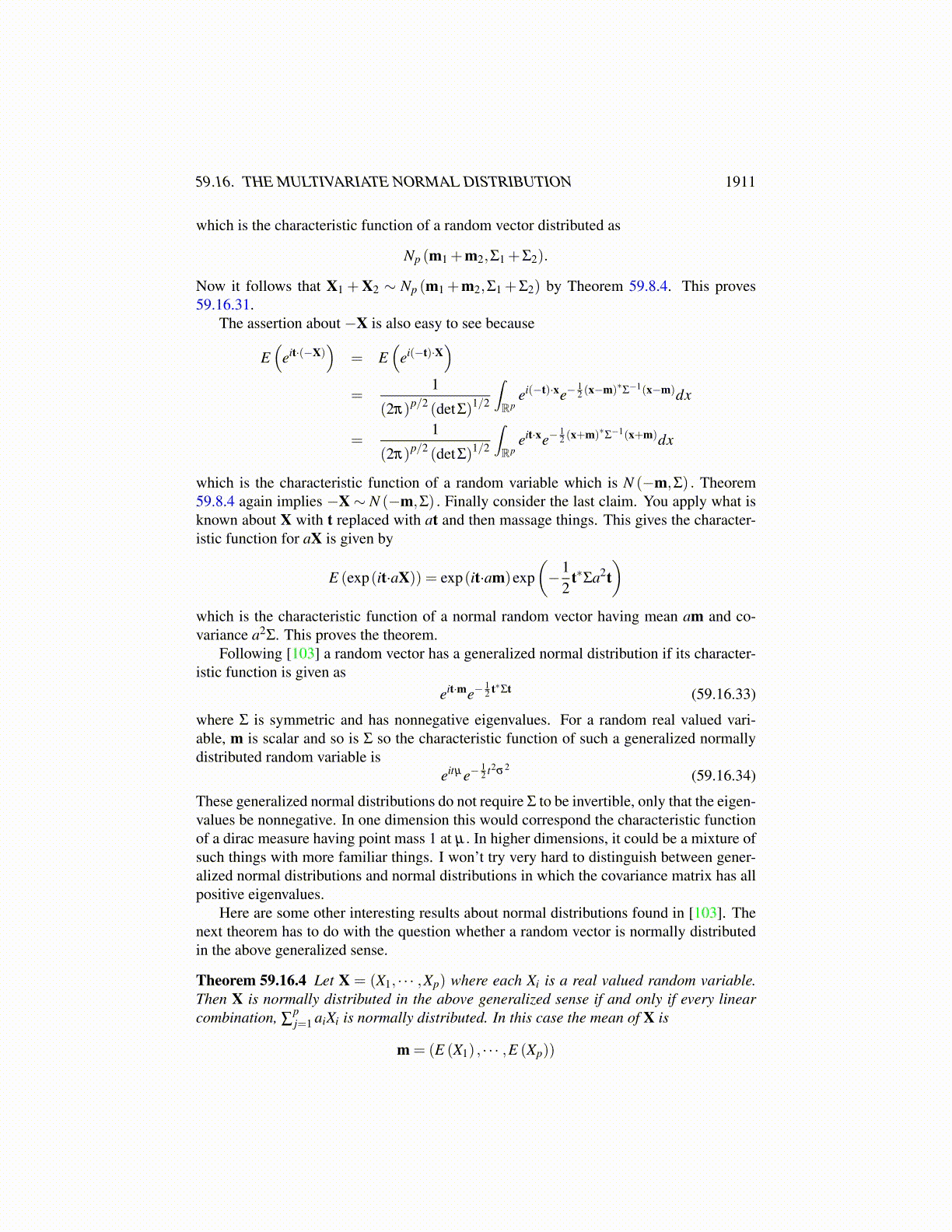
59.16. THE MULTIVARIATE NORMAL DISTRIBUTION 1911
Proof: Let R be an orthogonal transformation such that
RΣR∗ = D = diag(σ
21, · · · ,σ2
p).
Changing the variable by x−m = R∗y,
E (X) ≡∫Rp
xe−12 (x−m)∗Σ−1(x−m)dx
(1
(2π)p/2 det(Σ)1/2
)
=∫Rp
(R∗y+m)e−12 y∗D−1ydy
(1
(2π)p/2∏
pi=1 σ i
)
= m∫Rp
e−12 y∗D−1ydy
(1
(2π)p/2∏
pi=1 σ i
)= m
by Fubini’s theorem and the easy to establish formula
1√2πσ
∫R
e−y2
2σ2 dy = 1.
Next let M ≡ E((X−m)(X−m)∗
). Thus, changing the variable as above by x−m =
R∗y
M =∫Rp
(x−m)(x−m)∗ e−12 (x−m)∗Σ−1(x−m)dx
(1
(2π)p/2 det(Σ)1/2
)
= R∗∫Rp
yy∗e−12 y∗D−1ydy
(1
(2π)p/2∏
pi=1 σ i
)R
Therefore,
(RMR∗)i j =∫Rp
yiy je−12 y∗D−1ydy
(1
(2π)p/2∏
pi=1 σ i
)= 0,
so; RMR∗ is a diagonal matrix.
(RMR∗)ii =∫Rp
y2i e−
12 y∗D−1ydy
(1
(2π)p/2∏
pi=1 σ i
).
Using Fubini’s theorem and the easy to establish equations,
1√2πσ
∫R
e−y2
2σ2 dy = 1,1√
2πσ
∫R
y2e−y2
2σ2 dy = σ2,
it follows (RMR∗)ii = σ2i . Hence RMR∗ = D and so M = R∗DR = Σ.
Theorem 59.16.3 Suppose X1 ∼ Np (m1,Σ1) , X2 ∼ Np (m2,Σ2) and the two random vec-tors are independent. Then
X1 +X2 ∼ Np (m1 +m2,Σ1 +Σ2). (59.16.31)